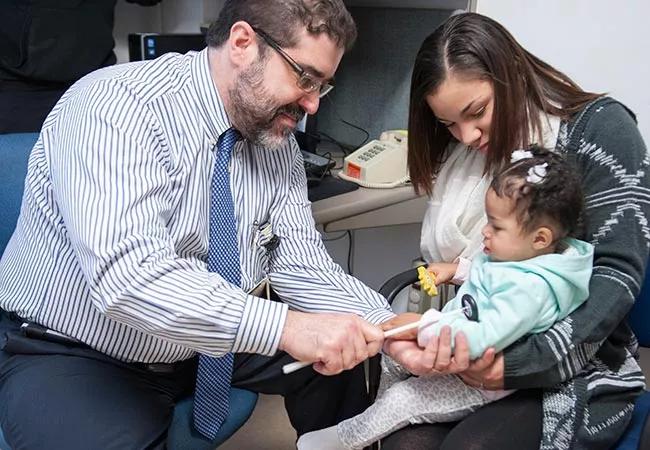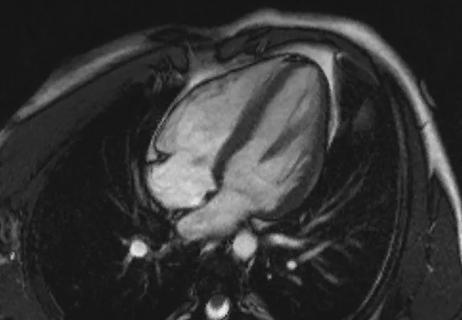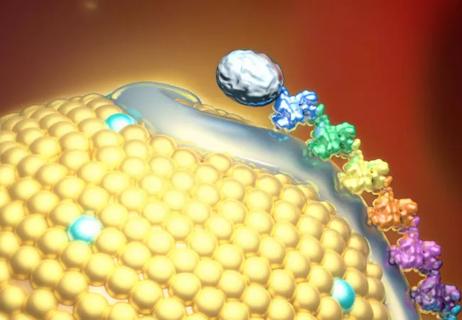Advertisement
Why a dedicated Neurocardiac Clinic makes sense

Advertisement
Cleveland Clinic is a non-profit academic medical center. Advertising on our site helps support our mission. We do not endorse non-Cleveland Clinic products or services. Policy
The debate about the importance and interdependence of the heart-brain relationship is an ancient one. It dates back at least to the 4th century B.C., when Aristotle wrote in De Motu Animalium: “The seat of the soul and the control of voluntary movement — in fact, of nervous functions in general — are to be sought in the heart. The brain is an organ of minor importance.”
The ancient Egyptians believed the heart to be the center of knowledge, recording all the good and bad deeds of a person’s life. In fact, the hearts of Egyptian mummies were carefully embalmed and preserved, while their brains were discarded along with other internal organs and stored outside the burial sarcophagus.
The “cardiocentrists,” epitomized by Aristotle (384-322 B.C.), believed the heart was the seat of the soul and of reason, whereas the “cerebrocentrists,” including Plato (ca. 427-347 B.C.), Hippocrates (460-370 B.C.) and Herophilus (ca. 335-280 B.C.), believed the brain served this function.
Fortunately, since the days of these venerable philosophers, the advancement of science has enabled us to understand the brain’s primacy in human cognition, development and emotion — as well as the profound relationship between cardiac and neurological pathologies.
Advances in the surgical treatment of congenital heart disease (CHD) over the past 40 years have been dramatic, to the point that there are now more adults surviving with CHD (approximately 1.2 million) than there are children with the condition.
CHD remains one of the most common birth defects, affecting nearly 1 percent (approximately 30,000-40,000) of U.S. births each year. The era of neonatal corrective surgery, which still defines management trends, began in the early 1970s with Sir Brian Gerald Barratt-Boyes, a pioneering New Zealand cardiothoracic surgeon. His introduction of hypothermia and cardiac arrest for corrective neonatal surgery meant that children with CHD were exposed to decreased chronic hypoxia and less palliative surgery, with reduced morbidity from recurrent bypass.
Advertisement
With improved survival, neurological injury has become the major extracardiac complication from cardiopulmonary bypass and CHD. Early morbidity includes stroke, seizures and epilepsy, but increasingly attention is being paid to the long-term neurodevelopmental disabilities these children suffer.
Although initially attributed to the effects of cardiopulmonary bypass surgery, the incidence of neurodevelopmental disability did not decrease despite extensive efforts through the 1980s and 1990s to optimize bypass surgery variables. It is now well-appreciated that impaired fetal brain development and circulation, coexisting genetic syndromes, and pre- and postsurgical hemodynamic instability are equally important factors contributing to brain injury and neurodevelopmental outcome.
Distinctive neurodevelopmental profiles in children with CHD are now recognized and include problems such as:
Approximately 30 to 50 percent of children who have undergone cardiopulmonary bypass for complex CHD will require remedial school services, and 15 percent will need full-time special education. Early identification of neurodevelopmental impairments offers the best opportunity for intervention and treatment that may allow the child to reach his or her fullest potential and minimize disabilities.
Advertisement
In view of these insights, the American Heart Association in 2012 released a scientific statement recommending periodic developmental surveillance, screening and evaluation of children with CHD.
In late 2011, Cleveland Clinic established a comprehensive, dedicated Neurocardiac Clinic as part of our Neurocardiology Program to address the unique neurodevelopmental needs of children with complex CHD.
This interdisciplinary clinic — one of a select few of its kind in the nation — provides early screening and detailed evaluation of children at risk for neurodevelopmental disabilities, ongoing care and monitoring of neurodevelopmental problems, and education and assistance for patients and families. Specialists include pediatric neurologists, cardiologists, developmental pediatricians, psychologists/behavioral health specialists, and speech, occupational and physical therapists.
More than 400 children have been evaluated in the clinic as of 2015, providing unique insights into the long-term disabilities these children face and the impact of these disabilities on their quality of life.
New research by our group has highlighted the frequency and severity of migraine headaches in this population — a condition that is underrecognized and undertreated and has a significant impact on children’s quality of life.
Current work also involves assessing the safety and optimal monitoring of ADHD medications in this vulnerable population, given the frequency of ADHD and concerns regarding use of ADHD medication in children with CHD. Stimulant medications such as methylphenidate or amphetamine-based products are often most effective for ADHD but carry potential cardiac risks such as increased heart rate and potentially elevated blood pressure.
Advertisement
Other ADHD treatment options include alpha-2 adrenergic agonists (short- or long-acting guanfacine), which may cause modest, dose-dependent decreases in blood pressure and heart rate (although typically asymptomatic), and the selective norephinephrine reuptake inhibitor atomoxetine, which may cause an increase in heart rate and blood pressure. Physicians generally should avoid prescribing atomoxetine for patients with known serious structural cardiac abnormalities, cardiomyopathy or serious heart rhythm abnormalities that could elevate the risk for noradrenergic effects.
Dr. Friedman (pictured at the top of this post with a Neurocardiac Clinic patient) is Director of Pediatric Neurosciences at Cleveland Clinic and Head of the Pediatric Neurocardiology Program.
Advertisement
Advertisement

SCAI document focuses on technical aspects of care where clear guidance had been lacking

High composite score in myectomy specimens signals worse prognosis

Few patients report left ventricular dysfunction or heart failure after one year

Avoidance of septal reduction therapy continues while LVEF dysfunction remains infrequent

Phase 2 trial of zerlasiran yields first demonstration of longer effect with each dose of an siRNA

OPTION trial demonstrates significantly less bleeding risk with comparable efficacy

Aortic valve replacement is best option for lowering mortality in this high-risk population

Novel approach outperforms standard of care for post-PVI stenosis and occlusion